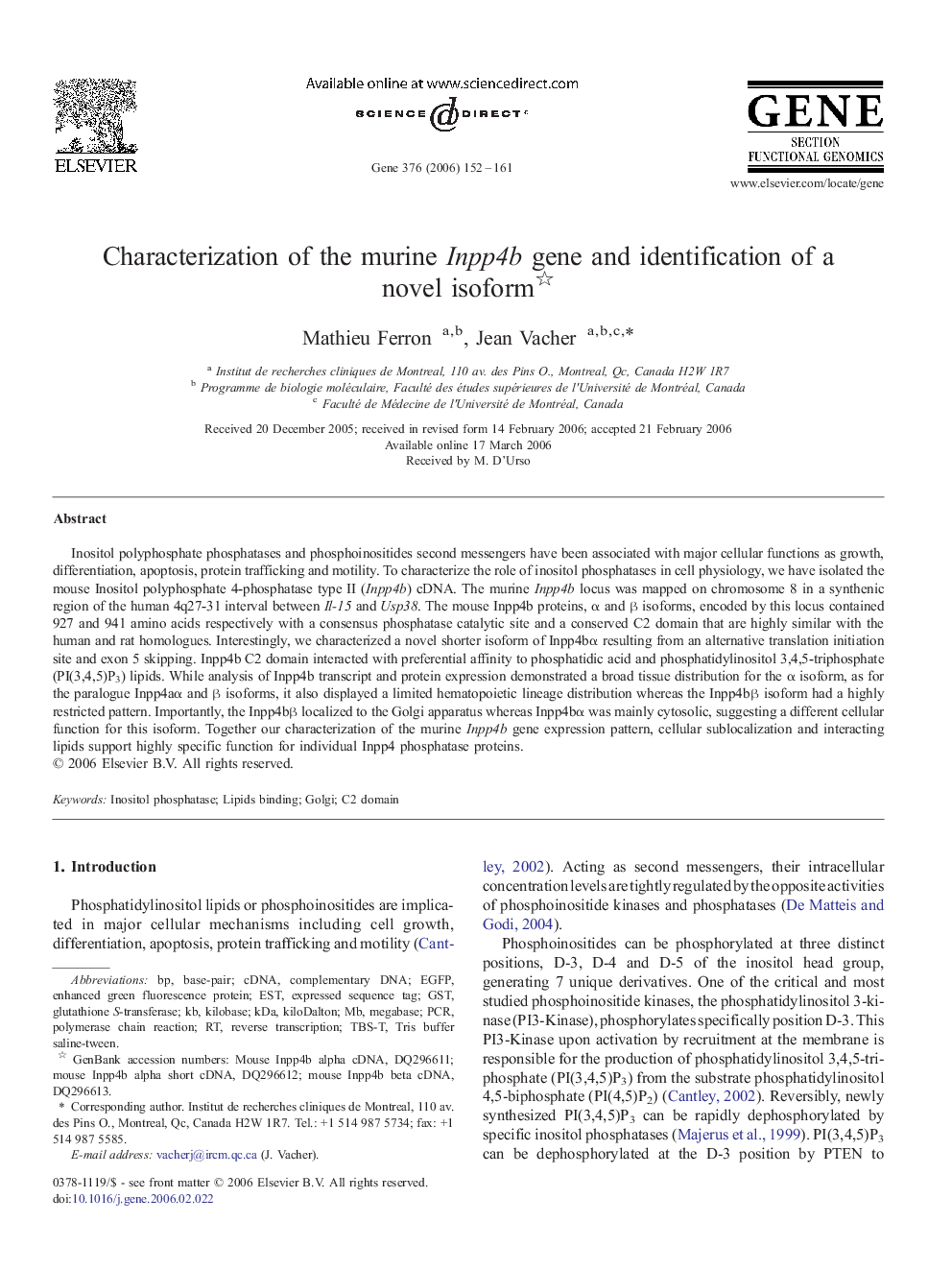| Article ID | Journal | Published Year | Pages | File Type |
|---|---|---|---|---|
| 2820083 | Gene | 2006 | 10 Pages |
Inositol polyphosphate phosphatases and phosphoinositides second messengers have been associated with major cellular functions as growth, differentiation, apoptosis, protein trafficking and motility. To characterize the role of inositol phosphatases in cell physiology, we have isolated the mouse Inositol polyphosphate 4-phosphatase type II (Inpp4b) cDNA. The murine Inpp4b locus was mapped on chromosome 8 in a synthenic region of the human 4q27-31 interval between Il-15 and Usp38. The mouse Inpp4b proteins, α and β isoforms, encoded by this locus contained 927 and 941 amino acids respectively with a consensus phosphatase catalytic site and a conserved C2 domain that are highly similar with the human and rat homologues. Interestingly, we characterized a novel shorter isoform of Inpp4bα resulting from an alternative translation initiation site and exon 5 skipping. Inpp4b C2 domain interacted with preferential affinity to phosphatidic acid and phosphatidylinositol 3,4,5-triphosphate (PI(3,4,5)P3) lipids. While analysis of Inpp4b transcript and protein expression demonstrated a broad tissue distribution for the α isoform, as for the paralogue Inpp4aα and β isoforms, it also displayed a limited hematopoietic lineage distribution whereas the Inpp4bβ isoform had a highly restricted pattern. Importantly, the Inpp4bβ localized to the Golgi apparatus whereas Inpp4bα was mainly cytosolic, suggesting a different cellular function for this isoform. Together our characterization of the murine Inpp4b gene expression pattern, cellular sublocalization and interacting lipids support highly specific function for individual Inpp4 phosphatase proteins.
